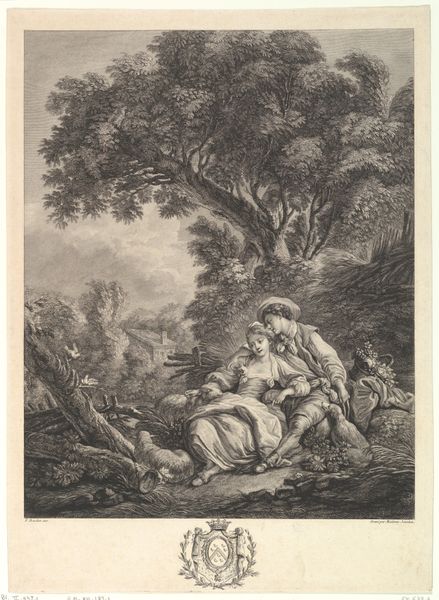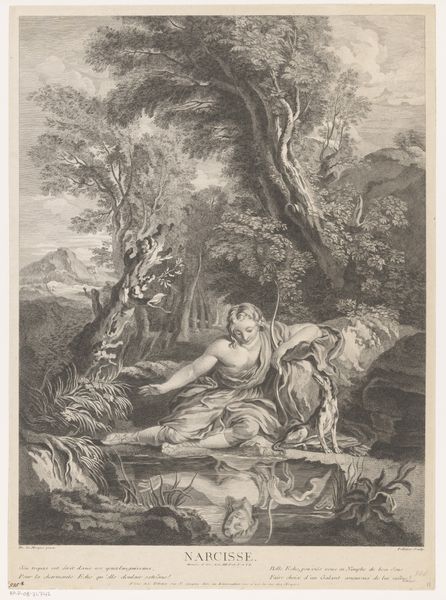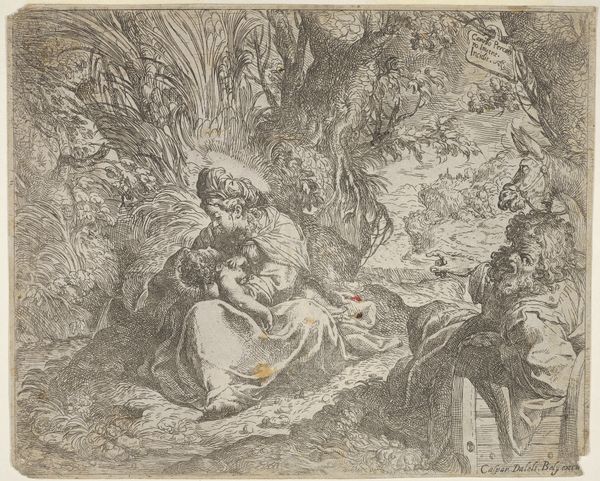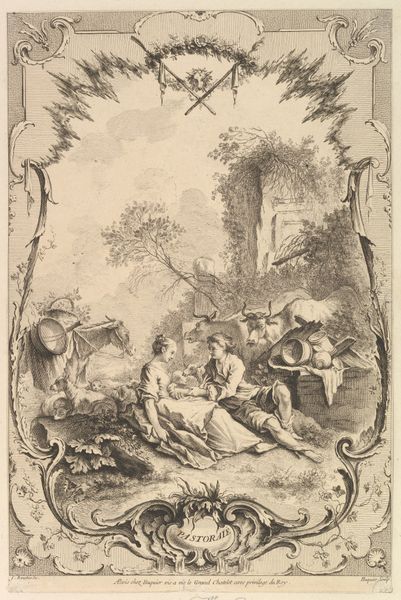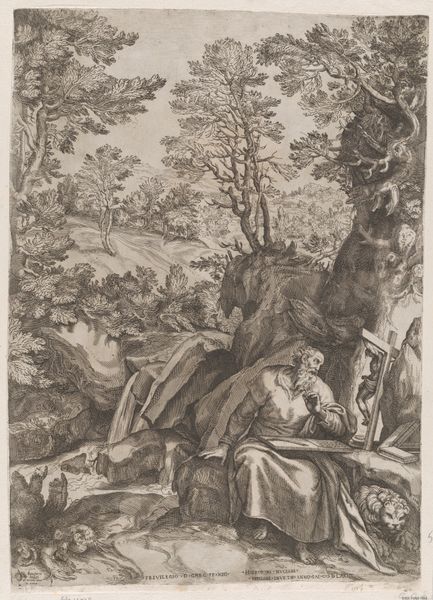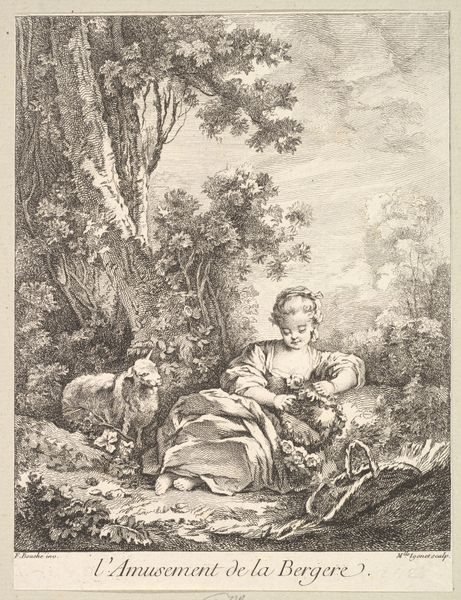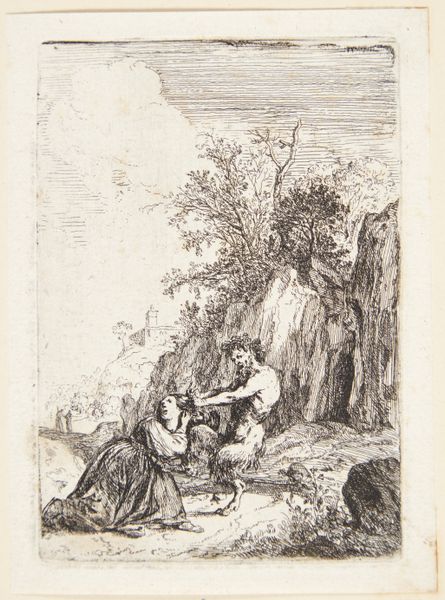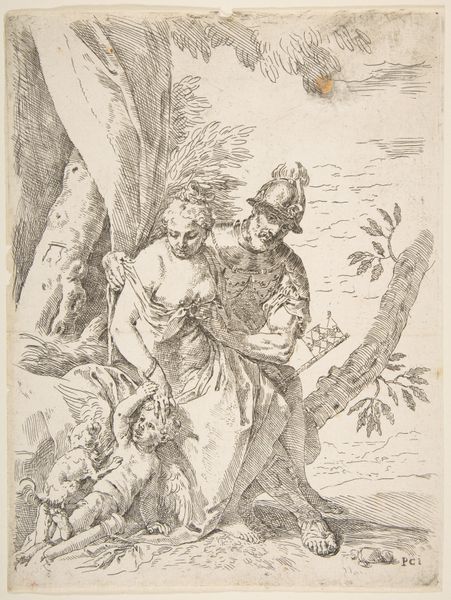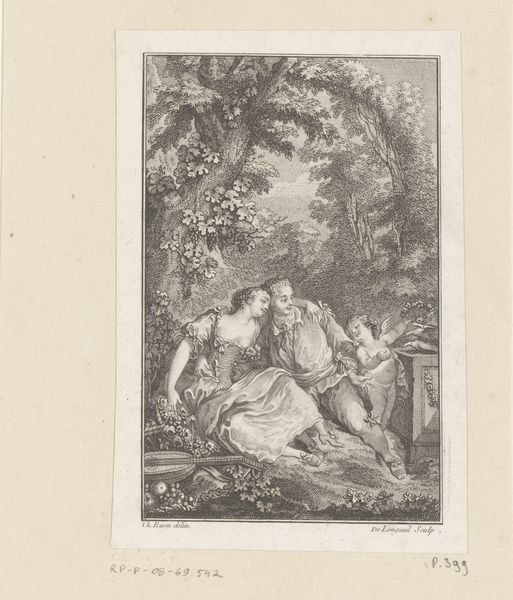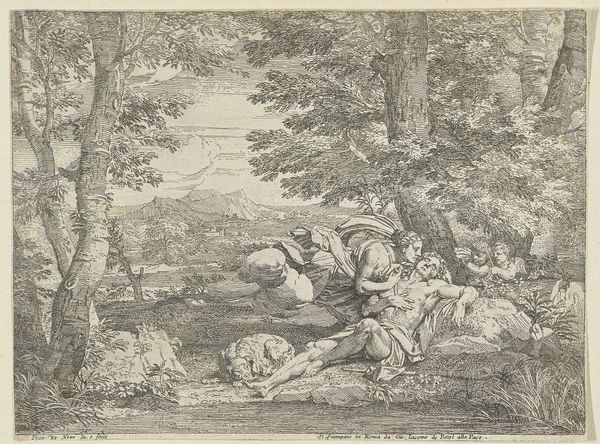
drawing, print, etching, ink
#
drawing
#
narrative-art
#
baroque
# print
#
etching
#
ink
#
genre-painting
#
rococo
Copyright: National Gallery of Art: CC0 1.0
Curator: This print, etched in ink, is entitled "The Two Lovers," created around 1750 by Gabriel de Saint-Aubin. Editor: My first impression is of clandestine affection. It evokes the spirit of a forbidden meeting beneath a shadowed canopy. There's a subtle imbalance, maybe anxiety, woven into this rococo scene. Curator: Rococo, of course, emerged amidst courtly intrigue. We see the artist depicting a quiet pastoral scene, which contrasts sharply with the formal portraiture typical of the period. But in those same courtly environments, a pastoral retreat such as this offered space to consider and comment upon class, gender, and power relations. Editor: It’s interesting how the medium – etching – itself lends to that feeling of something hidden. The subtle tonalities, the delicate, almost scratchy lines – there’s a secrecy conveyed that would be hard to obtain with bolder forms. Look how she leans back, the tilt of her face conveying both intrigue, and the implicit risks and stakes. Curator: Saint-Aubin was very much involved with his contemporary artistic and cultural landscape. His etchings captured a time where the elite sought refuge in representations of simple country life. The placement of the subjects in nature, away from societal rules and prying eyes. Do you get a sense of liberty here? Editor: Absolutely. It reflects the era’s flirtation with ideals of "natural" emotion versus societal constraints, particularly on women. I wonder, though, is there a darker edge? Look at how her presumed agency plays out against his assumed social or economic dominance over her. The bouquet casually dropped on the ground – what’s that saying? Curator: What do you mean by that? Editor: I feel it is essential to decode these historical markers and situate them inside contemporary perspectives to unpack the image's multiple implications, including the era's socio-political structures, in relationship with the idea of love and gendered power dynamics. I think the artist prompts this discussion. Curator: A compelling angle! It certainly illuminates how historical works continue speaking to present day discourse, encouraging reevaluation with fresh lenses. Editor: It shows that studying historical prints gives so many diverse angles on social topics! Curator: Thank you.
Comments
No comments
Be the first to comment and join the conversation on the ultimate creative platform.


